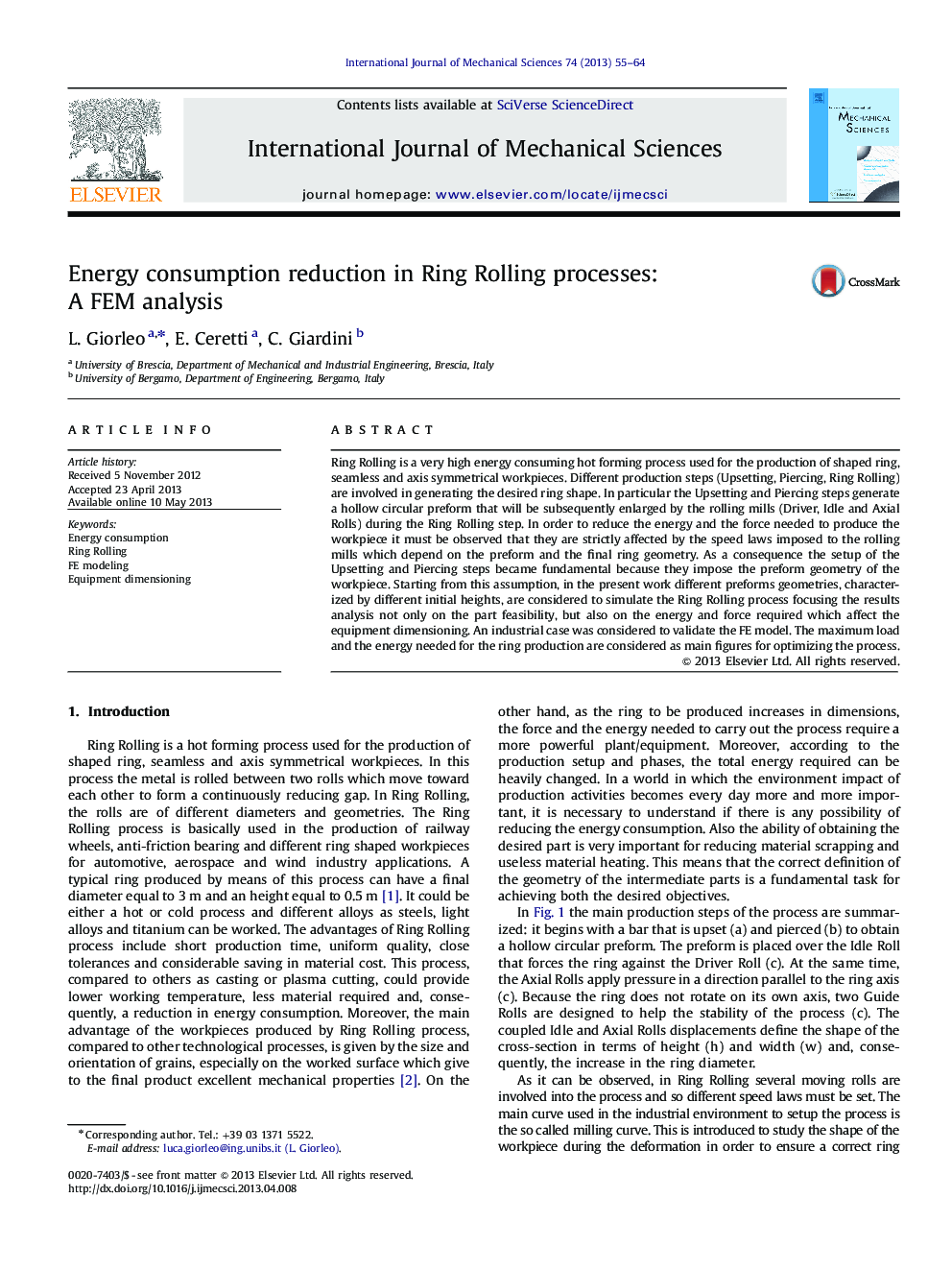| Article ID | Journal | Published Year | Pages | File Type |
|---|---|---|---|---|
| 782421 | International Journal of Mechanical Sciences | 2013 | 10 Pages |
•A complete Ring Rolling process was modeled including Upsetting and Piercing step.•Based on an industrial case study four different starting ring geometry were designed with different upset height.•An analytic model was introduced to estimate the Idle and Axial speed law.•The results were compared in terms of ring quality, maximum load and the energy needed for the ring production.•Results underline that a decrease of the upset height could guarantees less energy, less defect and material saving.
Ring Rolling is a very high energy consuming hot forming process used for the production of shaped ring, seamless and axis symmetrical workpieces. Different production steps (Upsetting, Piercing, Ring Rolling) are involved in generating the desired ring shape. In particular the Upsetting and Piercing steps generate a hollow circular preform that will be subsequently enlarged by the rolling mills (Driver, Idle and Axial Rolls) during the Ring Rolling step. In order to reduce the energy and the force needed to produce the workpiece it must be observed that they are strictly affected by the speed laws imposed to the rolling mills which depend on the preform and the final ring geometry. As a consequence the setup of the Upsetting and Piercing steps became fundamental because they impose the preform geometry of the workpiece. Starting from this assumption, in the present work different preforms geometries, characterized by different initial heights, are considered to simulate the Ring Rolling process focusing the results analysis not only on the part feasibility, but also on the energy and force required which affect the equipment dimensioning. An industrial case was considered to validate the FE model. The maximum load and the energy needed for the ring production are considered as main figures for optimizing the process.
